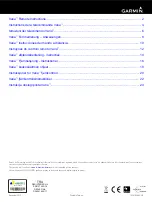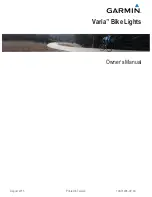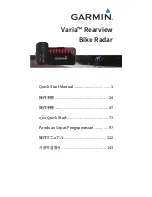
QTS-6000 Series
Analog Transmitter/Sensor
B71050-021-000-RB.doc
ELECTROCHEMICAL TRANSMITTER
JUL. 18, 2007
PRODUCT MANUAL
7
5. INSTALLATION
*WARNING* STATIC ELECTRICITY - Installation, wiring, configuration, or other activity may
require handling or disassembly of the transmitter circuit card assemblies (CCA).
Handling of a CCA without proper precautions can expose the electronic components
to the possible damage from static electricity discharge.
Try to ensure you are grounded when handling a CCA. If continuous grounding is
not practical, touch some metal item, which is known to be grounded. Avoid
walking around after this as you can regenerate a static charge. Note that the
smallest static discharge, which is noticeable by humans, is 3,000 Volts. A
noticeable, significant discharge may be as high as 30,000 Volts
5.1 Mounting
The QTS-6100 Sensor/Transmitter should be mounted where the gas to be measured is most likely to be
present. This location will be dependent on the source of the target gas and whether that gas is lighter or
heavier than air. Air circulation and mixture should also be taken into account. The following table
provides recommended mounting location based on the molecular weight of the gas:
M
ODEL
#
G
AS
S
YMBOL
M
OUNT
L
OCATION
QTS-61110 Hydrogen Sulphide
H2S
Low
9 to 18” (230 to 460 mm) above floor
QTS-61115 Hydrogen Cyanide
HCN
Mid
48 to 72” (1200 to 1800 mm) above floor
QTS-61120 Chlorine
Cl2
Low
9 to 18” (230 to 460 mm) above floor
QTS-61123 Chlorine Dioxide
ClO2
Low
9 to 18” (230 to 460 mm) above floor
QTS-61125 Hydrogen Chloride
HCl
Mid
48 to 72” (1200 to 1800 mm) above floor
QTS-61140 Sulphur Dioxide
SO2
Low
9 to 18” (230 to 460 mm) above floor
QTS-61150 Nitrogen Dioxide
NO2
Low
9 to 18” (230 to 460 mm) above floor
QTS-61160 Carbon Monoxide
CO
Mid
48 to 72” (1200 to 1800 mm) above floor
QTS-61190 Nitric Oxide
NO
Mid
48 to 72” (1200 to 1800 mm) above floor
QTS-61211 Hydrogen
H2
High
9 to 18” (230 to 460 mm) below ceiling
QTS-61220 Ammonia
NH3
High
9 to 18” (230 to 460 mm) below ceiling
QTS-61230 Ethylene Oxide
C2H4O
Low
9 to 18” (230 to 460 mm) above floor
QTS-61240 Ozone
O3
Mid
48 to 72” (1200 to 1800 mm) above floor
Table 1 - Sensor/Transmitter Mounting Location
Where possible, the sensor/transmitter should be mounted where it is accessible for the purposes of routine
re-calibration and periodic sensor replacement. Sufficient room should be left to allow the enclosure cover
to be removed. On units with industrial explosion-proof enclosures, sufficient room should be left to allow
the connection of the calibration adapter to the sensor assembly. For sensor element replacement there will
need to be enough room to reach into the sensor assembly.
*CAUTION*
The sensor assemblies on the industrial explosion-proof enclosures are designed for
integral mounting only. Remote mounting of the sensor assembly from the
transmitter may be possible, but may require special wiring considerations. If you
must remote mount the sensor from the transmitter please consult the factory for
recommendations.









































